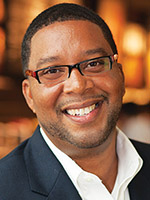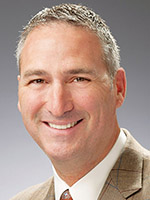
The restaurant industry is known for its diverse workforce at the entry level, but its challenge is growing a rich mix of employees of different genders, ethnicities, races and sexual orientations in the upper ranks.
Policies like affirmative action or quotas are a thing of the past. Restaurants today are taking a broader and more integrated approach. It’s not just about building diversity, they say, but also about inclusion.
Measuring the numbers of women or minorities at various levels is important, but even more so is building the level of engagement among those employees and how the company values their perspective.
“It’s not just counting heads, it’s making our heads count,” said Pat Harris, global chief diversity officer and vice president, global community engagement at McDonald’s Corp.
Building that sense of inclusion in an organization is more a journey than a destination, Harris added.
Mark Blankenship, Jack in the Box Inc.’s executive vice president, chief people, culture and corporate strategy officer, agreed, saying the issue that must be addressed both at the restaurant level and at the corporate level.
Fundamentally, building diversity and inclusion is good for business, Blankenship added.
“We believe that we make better decisions by bringing people to the table that have a different set of backgrounds, different ways of thinking and different views of the challenges the business faces,” he said.
Here are five proven tactics restaurant chains have used to create fertile grounds for developing a more diverse workforce across all ranks.
Build strategic relationships

(Continued from page 1)![]() As Starbucks grew into a global brand, employees looked for ways to connect with their coworkers. In 2001, Starbucks partners began organizing various “connection groups” based on people with common interests, from Spanish-speaking Latinos to those who love golf or bike riding.
As Starbucks grew into a global brand, employees looked for ways to connect with their coworkers. In 2001, Starbucks partners began organizing various “connection groups” based on people with common interests, from Spanish-speaking Latinos to those who love golf or bike riding.
Some of those connection groups have evolved into global professional networks, or partner networks, as the Seattle-based company calls them. Starbucks has eight prominent partner network groups with chapters all over the world.
The Access Alliance Network promotes inclusion for people with disabilities. The Armed Forces Network supports military partners and transitioning veterans.
The Black Partner Network works to cultivate, enhance and share the African and African-American experience. Hora Del Café is a Hispanic affinity group.
The Pride Alliance Network supports the lesbian, gay, bisexual and transgender community. The China/Asia Pacific Network focuses on the developing leaders in that region. And the India Partner Networks — the newest group — does the same in Southeast Asia.
The largest is the Women’s Development Network, with thousands of members and chapters across the globe. About half of Starbucks’ more than 300,000 partners are women.
Tony Byers, Starbucks’ director of global diversity and inclusion, said in 2008, the company decided to make those networks part of a formalized program, with the intent to develop future leaders, leveraging their insight and perspective to perform better as a business, and to make stronger connections to the communities Starbucks serves.
For example, Starbucks uses the networks to post job openings. The company can also provide opportunities for professional development, and the volunteer members often can exercise leadership skills in a way that could get them noticed.
“They’re getting exposure to senior leaders that they might not otherwise have,” Byers said.
Education

(Continued from page 2)![]() At McDonald’s, education is a key tool in promoting diversity.
At McDonald’s, education is a key tool in promoting diversity.
Its efforts began in the mid 1970s, under then-CEO Fred Turner, McDonald’s Pat Harris said. At the time, Turner had daughters in the workforce, and they complained about how they were treated at work.
Concerned, Turner began asking female employees at McDonald’s if they felt the same way. They did, and Turner began to look for ways to change as an organization.
He started by offering a workshop on managing the changing workforce.
“It became known as Fred’s workshop,” Harris said. “He introduced that workshop to the entire system. It became mandatory.”
Those workshops have evolved into what is now called the Intercultural Learning Lab, offering a much broader curriculum with a mentoring component.
“We talk about cultural differences, and people have honest and open conversations,” Harris said. “It’s more of a team building, cultural workshop. People leave energized and they learn about their teammates. It’s really very motivating. It helps drive change from within.”
As at Starbucks, employee networks also play a big role in such dialogue sessions at McDonald’s, Harris said.
Ultimately, the goal is to promote an environment of respect and cultural awareness.
“It helps people understand their coworkers or their bosses better. I don’t think people intentionally do things [to offend]. Sometimes they just don’t know,” Harris said.
At McDonald’s, such efforts have paid off. In the U.S., women and people of color represent 82 percent of management among company-owned restaurants, and 45 percent of approved owner–operators.
Half of the Oak Brook, Ill.-based chain’s board of directors are women or people of color, as are half of corporate officers within the U.S.
Succession planning

(Continued from page 3)![]() Jack in the Box has a successor management process that starts at the CEO level and runs through key positions through the vice president level, said Jack in the Box’s Mark Blankenship.
Jack in the Box has a successor management process that starts at the CEO level and runs through key positions through the vice president level, said Jack in the Box’s Mark Blankenship.
Ideally, the company likes to have one to three potential successor candidates for top positions. Jack in the Box monitors the process every year, and board members are included in the conversation, Blankenship said.
“We have a dialogue with the board about why these people and why not other people,” he said. “Clearly we want people that are the best qualified, that goes without saying.”
But diversity is an important aspect. “If you don’t make a deliberate effort, you’ll end up with people who all look the same,” he said.
Lenny Comma, the company’s current chairman and chief executive, was identified as a potential CEO candidate early in his career at Jack in the Box, when he was working with the Quick Stuff convenience store brand that has since been sold. However, Comma didn’t know he was being considered for leadership until much later.
Not all candidates come from within. The company recently hired Frances Allen, former executive vice president and chief brand officer at Denny’s Corp., as president of the Jack in the Box brand.
The company also looks for diversity at the restaurant level, making a specific effort to hire from the communities where those units operate.
Blankenship said Jack in the Box is also working on its mentor program to help develop future leaders. As workers climb the company hierarchy, the level of diversity starts to dwindle, especially at the step from the restaurant manager level to district manager, he said.
“I think we can do a better job as an industry in having formal mentor programs,” he said. “Our mentor program isn’t as broad as I would like it to be. We have some work to do there.”
Recruit
(Continued from page 4)![]() Earlier this year, Dunkin’ Brands Group Inc. partnered with the National Association for the Advancement of Colored People, or NAACP, designed to increase the number of African-American-owned franchise businesses in the U.S.
Earlier this year, Dunkin’ Brands Group Inc. partnered with the National Association for the Advancement of Colored People, or NAACP, designed to increase the number of African-American-owned franchise businesses in the U.S.
Canton, Mass.-based Dunkin’ Brands is parent to the Dunkin’ Donuts and Baskin-Robbins brands, both of which are almost all franchise operated. Though the program is designed to encourage franchise ownership in general, the two brands will also likely benefit.
Through the partnership, the company has developed a franchising education and training program, as well as offered help in overcoming the financial challenges of business ownership.
The goal is to help new or less-experienced candidates develop as entrepreneurs of not just one or two units, but as larger multiunit operators.
“We believe this partnership will enable Dunkin’ Brands to build a larger, more diverse pool of franchise candidates, accelerate our expansion in new and existing markets, and continue to build customer loyalty for our two brands across the country,” Grant Benson, Dunkin’ Brands’ vice president of global franchising and business development, said when the program was revealed.
Outreach
(Continued from page 5)![]() At Denny’s, outreach begins early. The Spartanburg. S.C.-based company partners with a local elementary school, where Denny’s employees volunteer.
At Denny’s, outreach begins early. The Spartanburg. S.C.-based company partners with a local elementary school, where Denny’s employees volunteer.
It’s not only a way to reach students; it’s a way to reach parents, said April Kelly-Drummond, Denny’s director of corporate diversity, community relations and multicultural marketing.
The school has a learning center where parents can earn their high school degree, and Denny’s can recruit, offering a career pathway, even for those who may not have college in their future.
Denny’s also offers a 10-week manager-in-training program that gives such recruits exposure to the entire restaurant operation, emerging as a manager.
Denny’s is active at the college level, too, partnering with the BET and its college tour program at historically African-American colleges and universities to reach potential recruits, not only with career fairs, but at football games and other events. “We go where they play,” Kelly-Drummond said.
One of Denny’s outreach tools is to communicate its many success stories, like that of a 16-year-old who started as a busboy and climbed the ranks, later becoming a franchise operator and entrepreneur. About 46 percent of the chain’s franchise restaurants are minority-owned, and minorities represent 63 percent of Denny’s workforce.
“At Denny’s, we present a pathway. There’s a way for you to grow. We can tell people, if you want to become an entrepreneur, here are the steps,” Kelly-Drummond said.
Contact Lisa Jennings at [email protected].
Follow her on Twitter: @livetodineout





